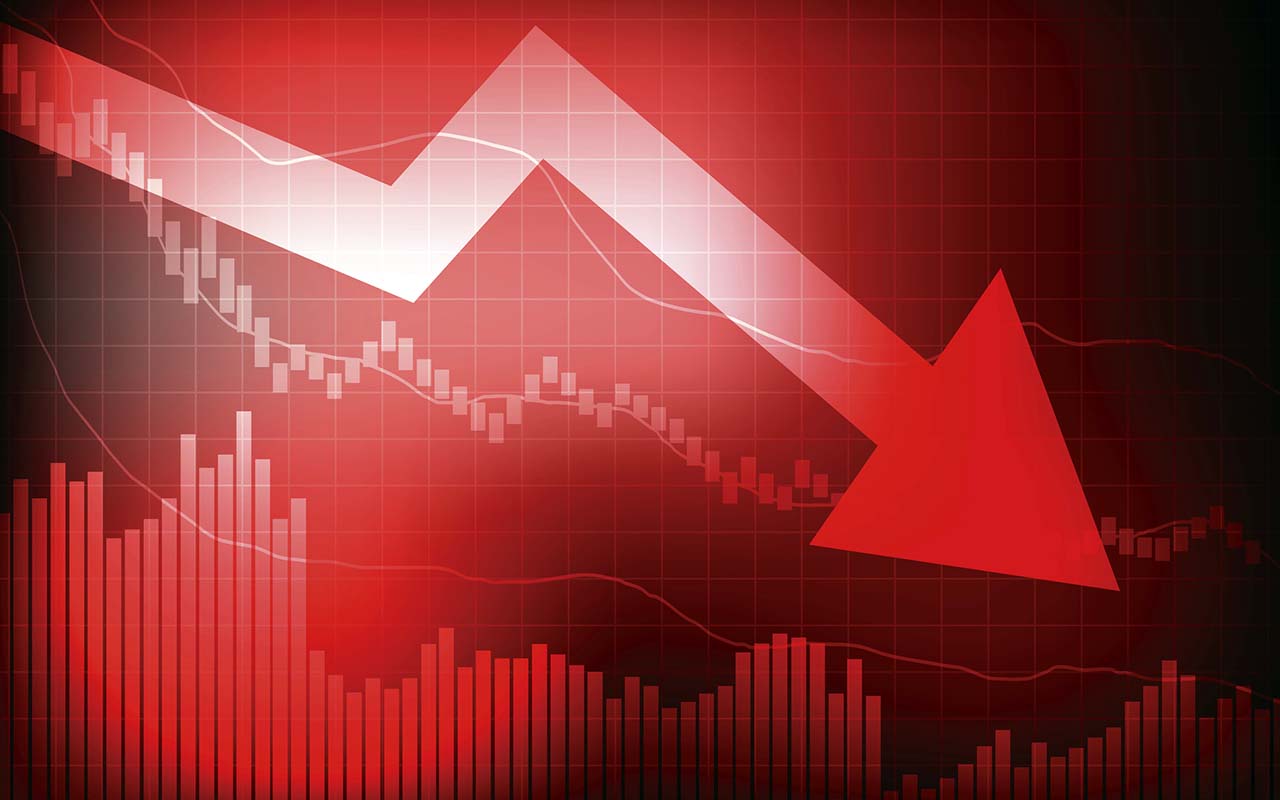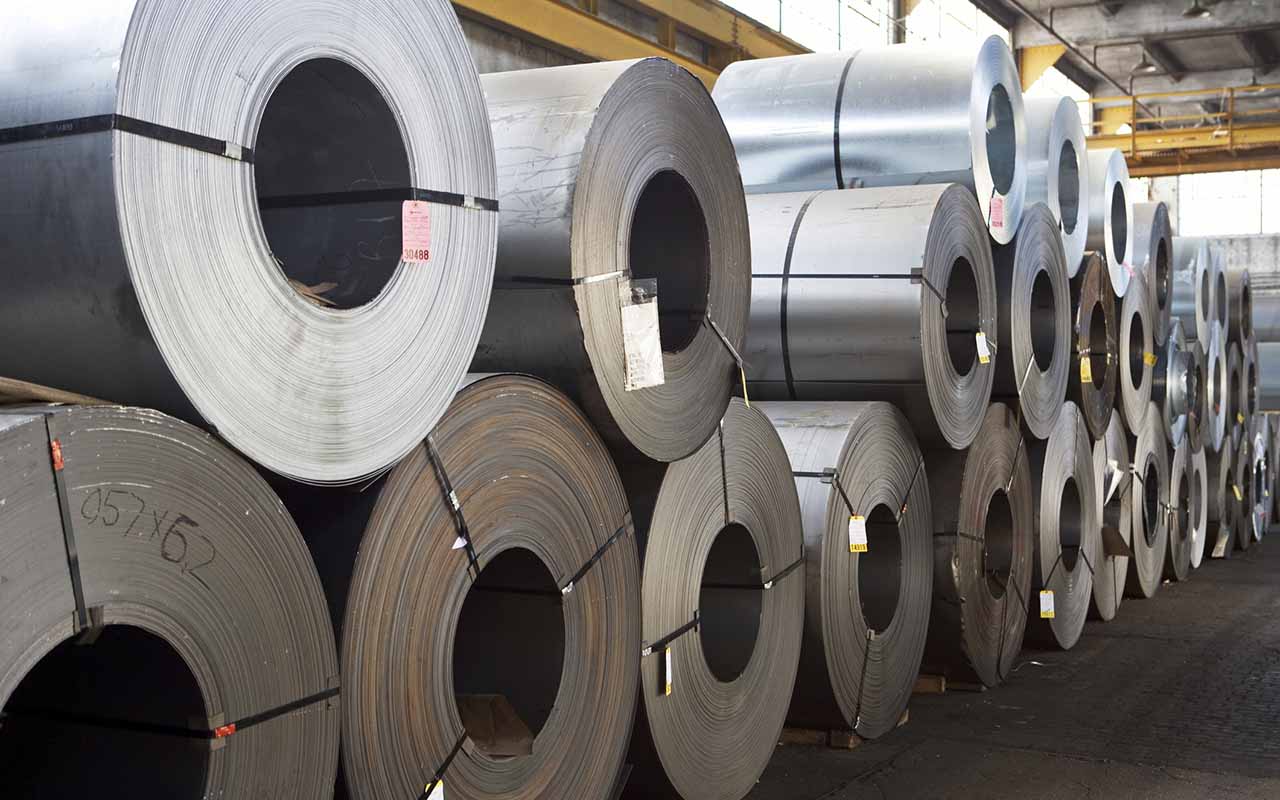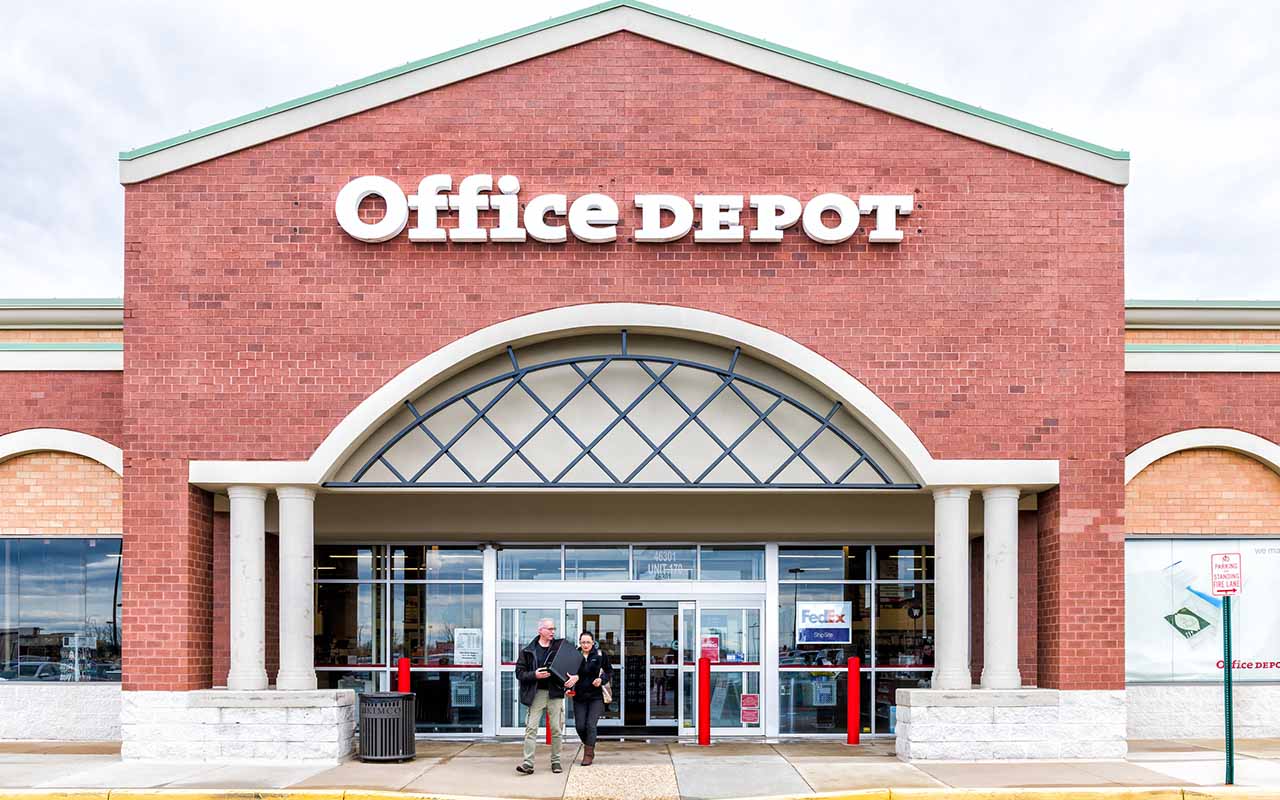11 Stocks to Sell That Analysts Are Souring On
Stocks have started to crater as the novel coronavirus spread to Europe and other parts of Asia.


Stocks have started to crater as the novel coronavirus spread to Europe and other parts of Asia. Fortunately, Warren Buffett, chairman and CEO of Berkshire Hathaway (BRK.B), was on hand Feb. 24, telling viewers on CNBC that folks should never sell based on headlines.
As always, the world's greatest investor dispensed excellent advice. Indiscriminate selling is too often a good way to lock in losses or forgo gains.
But that doesn't mean that investors shouldn't be looking for stocks to sell. They should, as part of a natural pruning to weed out lousy holdings and free up cash for better opportunities. To that end, some stocks looked like serious duds even before the Dow Jones Industrial Average tumbled almost a thousand points.
To find stocks Wall Street is most bearish on, we scoured the Center for Research in Securities Prices' (CRSP) total U.S. market index for companies with a minimum market capitalization of $500 million. Our stocks also had to have coverage by at least three analysts. Next, we turned to S&P Global Market Intelligence's recommendation roundup.
S&P Global surveys analysts' stock calls and scores them on a five-point scale, where 1.0 equals a Strong Buy and 5.0 is a Strong Sell. Scores between 3.5 and 2.5 translate into a Hold recommendation. Any score higher than 3.5 means that analysts, on average, believe the stock should be sold. The closer a score gets to 5.0, the higher their collective conviction.
Here are 11 stocks to sell that rank among the worst names listed on any major U.S. exchange. If you're still holding any of the names after the latest market selloff, you might want to rethink your commitment.
Share prices, dividend yields, price targets, analysts’ ratings and other data are courtesy of S&P Global Market Intelligence as of Feb. 21, unless otherwise noted. Stocks are listed by analysts’ average recommendation from best to worst.

United States Steel
- Market value: $1.6 billion
- Dividend yield: 1.7%
- Analysts' average recommendation: 3.63
Like the rest of the industry, United States Steel (X, $9.43) is suffering from sluggish demand and weak prices. Steel prices have been in steady decline for more than two years, and the current year isn't expected to be much better.
Although U.S. Steel's share price rose with the imposition of steel tariffs on Canada, Mexico and the European Union in May 2018, it has since swooned as those tariffs were eliminated for Canada and Mexico a year later.
"(The steel) market in 2020 is set to be weighed down by a continuation of last year's weaker end-consumption rates," says commodity-markets data provider Fastmarkets.
Much of that decline can be laid at the feet of China. Demand there is still growing, but the economy has cooled down considerably in the past few years. And now the spread of the COVID-19 coronavirus will add further pressure on construction and steel demand. The rest of the world, meanwhile, certainly isn't picking up any of the slack.
Goldman Sachs analyst Matthew Korn, who does see long-term upside potential in U.S. Steel's strategic maneuvers, nonetheless says the "risks to the stock are substantial" and that the company could be free cash flow-negative through 2022. He lists X among stocks to sell, giving it a $9 price target.
The analyst community as a whole projects U.S. Steel to post losses on an adjusted basis both this year and next. Shares are valued at 22 times 2022 earnings even though the expected growth rate is less than 7%.

Avnet
- Market value: $3.6 billion
- Dividend yield: 2.4%
- Analysts' average recommendation: 3.64
Avnet (AVT, $35.58) which markets, sells and distributes electronic components, is going in reverse. Analysts expect earnings to decline at an average rate of 2% a year over the next five years. The company is suffering from slow sales and the loss of Texas Instruments (TXN) as a critical supplier.
"We maintain our cautious stance on Avnet shares, as we expect continued topline and margin pressures due to the still-tough demand environment, as well as the wind-down of Texas Instruments sales later this year," writes Stifel, which rates shares at Hold.
Texas Instruments, which will exit its Avnet partnership by the end of the year, accounts for approximately $1.8 billion in sales, Stifel says – roughly 10% of its fiscal 2019 revenues.
One analyst sees a bargain in AVT, calling it a Strong Buy. But it's a lonely position. Five say it's a Hold. The rest have Avnet among their stocks to sell: one calls it Sell, while four slap a Strong Sell rating on the name. Two of those negative ratings were downgrades, by Wells Fargo and Cross Research, issued over the past month.

Buckle
- Market value: $1.2 billion
- Dividend yield: 4.9%
- Analysts' average recommendation: 3.67
Buckle (BKE, $24.75) – a casual-apparel and footwear retailer for young adults – has a long history of paying special dividends. It distributed $1.00 per share in 2019, $1.75 in 2018, 75 cents in 2017 and $1.00 in 2016, in addition to its regular quarterly payout.
That hasn't been sufficient to make analysts bullish on this name, however. Brick-and-mortar stores are under pressure from e-commerce and mall-based retailers like BKE are getting hurt the most. Declining mall traffic has caused average sales per store to drop over the past five years. The Buckle finds itself forced to lower prices and offer margin-squeezing discounts and promotions.
Analysts expect both earnings and revenue to decline in 2021 and 2022. Buckle is fighting back by "enhancing marketing efficiency, store remodeling and technology upgrades," says Zacks Equity Research, but the Street doesn't much care.
Two analysts call it a Hold, and one says Sell. Furthermore, as a group, they expect earnings to fall at an average annual rate of 5% over the next three to five years. And the pros' average target price of $21 gives the stock implied downside of 15% over the next 12 months or so.

Shutterstock
- Market value: $1.5 billion
- Dividend yield: 1.7%
- Analysts' average recommendation: 3.67
Shutterstock (SSTK, $41.07) moved to calm restive shareholders in August 2018 by paying a special dividend of $3 a share. It didn't work. SSTK shares are down 11% over the past two years vs. a gain of 23% for the S&P 500.
Most recently, the stock photography, video and music provider missed the Street's fourth-quarter revenue estimate, hurt by a slowdown in its enterprise business, which serves corporate customers. Indeed, both earnings and sales have missed the mark in four of the past five fiscal years.
Of the three analysts covering the stock tracked by S&P Global Market Intelligence, two call SSTK a Hold and one says Sell. Their average price target of $34.67 gives the stock implied downside of almost 16% in the next year or so.

PS Business Parks
- Market value: $4.6 billion
- Dividend yield: 2.5%
- Analysts' average recommendation: 3.80
PS Business Parks (PSB, $167.76) is a real estate investment trust (REIT), which give ordinary investors a way to invest in real estate. And because they're required to give most of their earnings to shareholders in return for tax breaks, they are known for having generous dividends.
At least most of them do. The REIT industry average dividend yield comes to 3.9%. PSB – a commercial-property operator that's primarily involved with multitenant industrial, flex and office space – yields a comparatively weak 2.5%.
Analysts have PSB among their stocks to sell for a bunch of more pressing reasons, however.
"The recovery in the industrial market has continued for long, and a whole lot of new buildings are slated to be completed and made available in the market in the near term, leading to higher supply and lesser scope for rent and occupancy growth," Zacks Equity Research writes. "Also, any protectionist trade policies will have an adverse impact on economic growth and the company's business over the long term."
PS Business Parks isn't expected to be a disaster. Analysts' average target price of $171.80 actually gives the stock implied upside of a little more than 2% over the next 12 months. But that forecast still has PSB – which has three Hold ratings and two Strong Sells – underperforming the market by a comfortable margin.

Office Depot
- Market value: $1.4 billion
- Dividend yield: 3.9%
- Analysts' average recommendation: 3.80
Office Depot (ODP, $2.55) is still alive, but it's a brutal slog selling office supplies and equipment in the age of e-commerce and big-box retailers. The stock is down by 24% over the past 52 weeks, and it has lost three-quarters of its value over the past half-decade.
ODP still has a substantial retail footprint, with 1,350 office supply stores across the U.S., Puerto Rico, the U.S. Virgin Islands and Canada. It also has a division that competes in the ultra-competitive information technology and outsourcing services industry.
Nonetheless, analysts expect earnings to stagnate and then decline for 2020 and 2021, respectively. Revenue is forecast to fall in fiscal years 2019, 2020 and 2021 – and ODP's top line has a nasty habit of falling short of Street estimates. Office Depot's sales have missed analysts' projections in four of the past six years.
Two analysts say Hold, two say Sell and one says Strong Sell. Their average target price of $2.07 gives ODP implied downside of 19%. Oh, and did we mention this is a two-dollar stock? At that price, institutional buyers such as index fund providers and hedge funds – which can be a stabilizing force – typically won't touch a stock.

Rite Aid
- Market value: $879.3 million
- Dividend yield: N/A
- Analysts' average recommendation: 3.83
If you expected pharmacy chain Rite Aid (RAD, $16.04) to get a boost from fears of novel coronavirus, forget it. Shares sunk Monday, Feb. 24, along with the rest of the stock market, which tanked on the spread of the disease to Europe.
The retail drugstore business is highly competitive, especially when your main rivals – CVS Health (CVS) and Walgreens (WBA) – are hooking up with pharmacy benefit managers and even, in the case of CVS, buying health insurance companies. Speaking of Walgreens, regulators blocked its outright acquisition of Rite Aid, but the chain still managed to buy almost 2,000 Rite Aid stores in 2017, leaving the chain a shadow of what it once was.
RAD shares have graced many lists of stocks to sell for years, and that bearishness has been justified. Rite Aid's stock has plunged by more than 90% over the past five years, and the pros still say it's no bargain. One contrarian analyst rates shares at Strong Buy, but three call it a Strong Sell, while another says Sell and yet another says Hold. Their average target price of $9.75 gives the stock implied downside of a whopping 39% in the next year or so.
Of particular worry is that the company has been free cash flow-negative in two of the past three fiscal years. Rite Aid is sitting on net debt (debt + cash) of roughly $2.4 billion, according to S&P Global Market Intelligence, so it literally can't afford to burn through cash.

Waddell & Reed
- Market value: $1.1 billion
- Dividend yield: 6.2%
- Analysts' average recommendation: 3.89
There are few worse places to be in the world of finance than the active mutual fund industry. Take a look at asset manager Waddell & Reed (WDR, $16.10).
The red-hot growth of passive mutual funds and mostly index-tracking exchange-traded funds (ETFs) are sucking assets out of the traditional mutual fund industry. Furthermore, WDR is small potatoes compared with leviathans like Vanguard, Fidelity and Charles Schwab (SCHW). WDR has assets under management of just $70 billion, down from a peak of $124 billion in 2014.
WDR has lost 11% over the past year vs. a gain of 19% for the broader market. It's hard to find anyone who says "buy the dip," either. Four analysts call it a Hold, two say it's a Sell and three rate it at Strong Sell.
The most recent earnings report only confirmed analysts' downbeat view.
"There was little in no-moat Waddell & Reed's fourth-quarter results that would alter our long-term view of the firm," write Morningstar analysts, who project annual organic growth to decline 7% to 9% on average over the next half-decade. "Net outflows of $3.4 billion continued the trend of negative organic growth that has affected Waddell & Reed for much of the past five and a half years."

World Acceptance
- Market value: $671.1 million
- Dividend yield: N/A
- Analysts' average recommendation: 4.00
Analysts don't exactly mince words when it comes to World Acceptance (WRLD, $84.60). Janney, which rates the stock at Neutral (equivalent of Hold) characterized the small-loan consumer finance company's most recent earnings report as "yet another disaster for WRLD."
Indeed, WRLD is in a world of trouble. It's currently in negotiations with the Securities and Exchange Commission and the Department of Justice to reach a settlement over an investigation into the company's former Mexico subsidiary. Authorities say the company allegedly violated the U.S. Foreign Corrupt Practices Act.
But the problems don't end there. The credit quality of the loans it's making is in steady decline. Spiking losses from charging off bad loans in the past two years have crippled earnings, Janney writes.
"The only bull case for WRLD is that it clears this investigation into the former Mexico subsidiary, credit (quality improves) and it gets a pass on the (implementation of current expected credit loss) from its lenders," Janney writes. "We are not comfortable that any/all of the aforementioned items will happen."
World Acceptance has lost about 30% of its value over the past year. Despite that discount, the analysts still put WRLD among other stocks to sell, expecting at least another 17% downside, based on their average price target of $70.

Hawaiian Electric Industries
- Market value: $5.4 billion
- Dividend yield: 2.7%
- Analysts' average recommendation: 4.00
Hawaiian Electric Industries (HE, $49.75), an electric utility serving most of the Hawaiian islands, should have a good thing going. Utility stocks effectively enjoy near-monopolies in the first place, and being on an island makes it really difficult for anyone else to encroach. As a result, Hawaiian Electric services roughly 95% of the island's population.
Nonetheless, HE's valuation, fundamentals and a shifting industry landscape have analysts down on the stock.
True, the utility's fourth-quarter earnings jumped 34% in the most recent quarter, boosted by its core business and American Savings Bank, which it owns. But then, stocks are forward looking – and on that basis, the Street does not like what it sees.
HE shares trade at 25 times expected earnings even though revenue and earnings are forecast to be sluggish at best. That's also significantly more expensive than the broader utilities industry, which trades at an average of 21 times earnings. Hawaiian Electric also suffers from headwinds common to the broader industry. The state is a prime spot to harvest both solar and wind for its energy needs, which means the potential for greater competition.
"Flat to declining load growth, new investments needed to modernize the grid, changing customer needs, and government policies supporting new energy choices are prompting a reconsideration of how utilities make a profit," says EnergyCentral, an industry trade publication.

Avista
- Market value: $3.4 billion
- Dividend yield: 3.2%
- Analysts' average recommendation: 4.40
Avista (AVA, $51.19) has a long history of dividend growth, but picking utility stocks comes down to more than their payouts. AVA, an electric and natural gas utility serving parts of Washington and Idaho, gets no love from Wall Street given its growth rate, valuation and other headwinds.
The stock has been underperforming for more than a year after regulators pulled the plug on Avista as a deal target. Canadian Hydro One's $5.3 billion offer for the utility was blocked by authorities in Washington and Idaho in early 2019, and Avista's stock has yet to recover.
In part that's because of its growth rate compared to its valuation. Analysts project average annual earnings growth of only 3.9%, but shares trade for 27 times next-12-month earnings. Like Hawaiian Electric, that's well above the industry average.
Although AVA's dividend yield is essentially in line with the industry average, something else it has in common with peers is less bullish: It too is under pressure from alternative energy.
Sum it all up, and Avista has earned the most bearish consensus opinion on this list of stocks to sell. Of the five analysts S&P Global Market Intelligence tracks who are covering the stock, one says Hold, one says Sell and three call AVA a Strong Sell. Their average target price comes to $43.40, which gives the stock implied downside of 15% over the next year or so.
Profit and prosper with the best of Kiplinger's advice on investing, taxes, retirement, personal finance and much more. Delivered daily. Enter your email in the box and click Sign Me Up.

Dan Burrows is Kiplinger's senior investing writer, having joined the publication full time in 2016.
A long-time financial journalist, Dan is a veteran of MarketWatch, CBS MoneyWatch, SmartMoney, InvestorPlace, DailyFinance and other tier 1 national publications. He has written for The Wall Street Journal, Bloomberg and Consumer Reports and his stories have appeared in the New York Daily News, the San Jose Mercury News and Investor's Business Daily, among many other outlets. As a senior writer at AOL's DailyFinance, Dan reported market news from the floor of the New York Stock Exchange.
Once upon a time – before his days as a financial reporter and assistant financial editor at legendary fashion trade paper Women's Wear Daily – Dan worked for Spy magazine, scribbled away at Time Inc. and contributed to Maxim magazine back when lad mags were a thing. He's also written for Esquire magazine's Dubious Achievements Awards.
In his current role at Kiplinger, Dan writes about markets and macroeconomics.
Dan holds a bachelor's degree from Oberlin College and a master's degree from Columbia University.
Disclosure: Dan does not trade individual stocks or securities. He is eternally long the U.S equity market, primarily through tax-advantaged accounts.
-
 The Retirement Donor's Checklist: Key Deadlines by Gift Type
The Retirement Donor's Checklist: Key Deadlines by Gift TypeRetirees have some charitable contribution options that can help avoid spikes in income from RMDS and capital gains.
-
 Cooler Inflation Supports a Relief Rally: Stock Market Today
Cooler Inflation Supports a Relief Rally: Stock Market TodayInvestors, traders and speculators welcome much-better-than-hoped-for core CPI data on top of optimism-renewing AI earnings.
-
 Are T-Mobile's Prepaid Perks a Home Run or a Strikeout?
Are T-Mobile's Prepaid Perks a Home Run or a Strikeout?T-Mobile's prepaid lineup promises MLB.TV, T-Mobile Tuesdays and hotspot data. But do the perks make it worth switching?
-
 Cooler Inflation Supports a Relief Rally: Stock Market Today
Cooler Inflation Supports a Relief Rally: Stock Market TodayInvestors, traders and speculators welcome much-better-than-hoped-for core CPI data on top of optimism-renewing AI earnings.
-
 Nasdaq Sinks 418 Points as Tech Chills: Stock Market Today
Nasdaq Sinks 418 Points as Tech Chills: Stock Market TodayInvestors, traders and speculators are growing cooler to the AI revolution as winter approaches.
-
 Stocks Chop as the Unemployment Rate Jumps: Stock Market Today
Stocks Chop as the Unemployment Rate Jumps: Stock Market TodayNovember job growth was stronger than expected, but sharp losses in October and a rising unemployment rate are worrying market participants.
-
 Stocks Struggle Ahead of November Jobs Report: Stock Market Today
Stocks Struggle Ahead of November Jobs Report: Stock Market TodayOracle and Broadcom continued to fall, while market participants looked ahead to Tuesday's jobs report.
-
 AI Stocks Lead Nasdaq's 398-Point Nosedive: Stock Market Today
AI Stocks Lead Nasdaq's 398-Point Nosedive: Stock Market TodayThe major stock market indexes do not yet reflect the bullish tendencies of sector rotation and broadening participation.
-
 Dow Adds 646 Points, Hits New Highs: Stock Market Today
Dow Adds 646 Points, Hits New Highs: Stock Market TodayIt was "boom" for the Dow but "bust" for the Nasdaq following a December Fed meeting that was less hawkish than expected.
-
 Dow Rises 497 Points on December Rate Cut: Stock Market Today
Dow Rises 497 Points on December Rate Cut: Stock Market TodayThe basic questions for market participants and policymakers remain the same after a widely expected Fed rate cut.
-
 JPMorgan's Drop Drags on the Dow: Stock Market Today
JPMorgan's Drop Drags on the Dow: Stock Market TodaySmall-cap stocks outperformed Tuesday on expectations that the Fed will cut interest rates on Wednesday.
